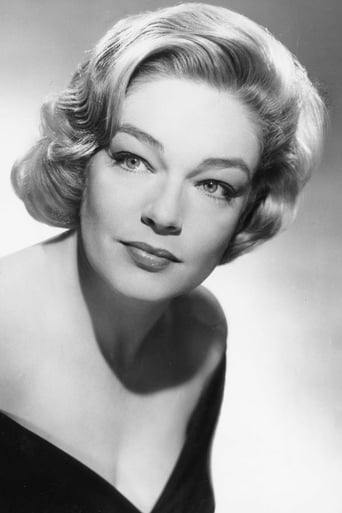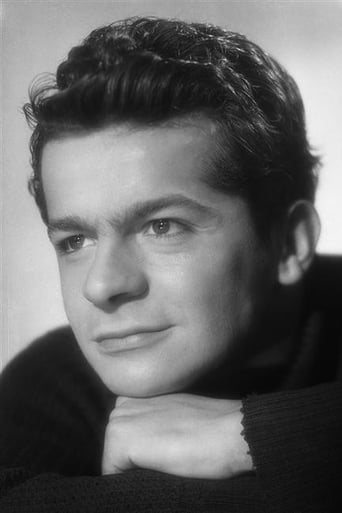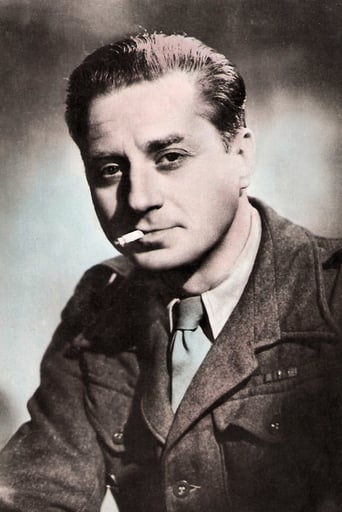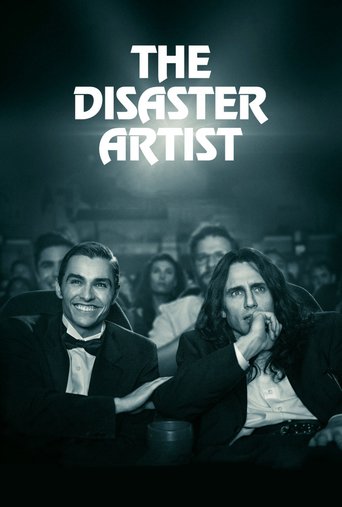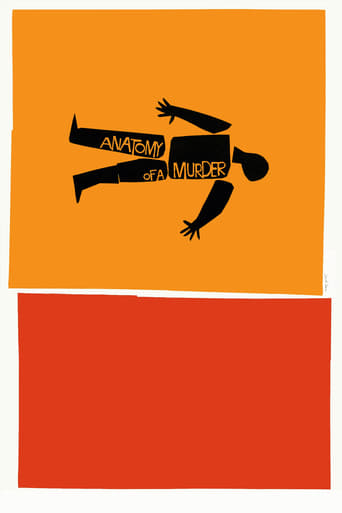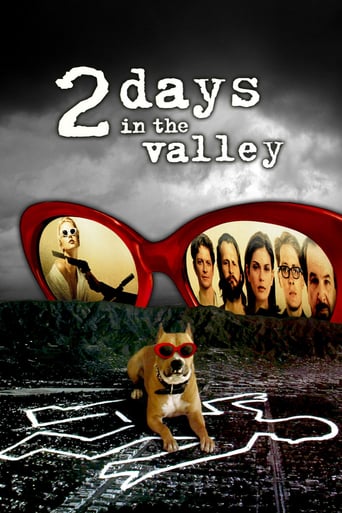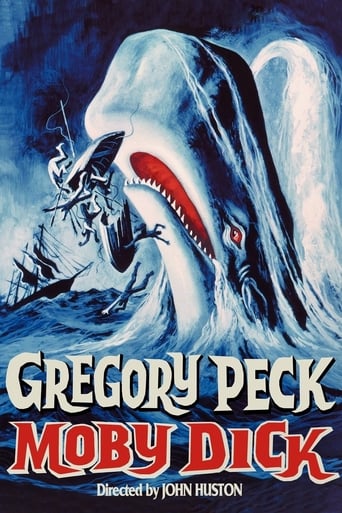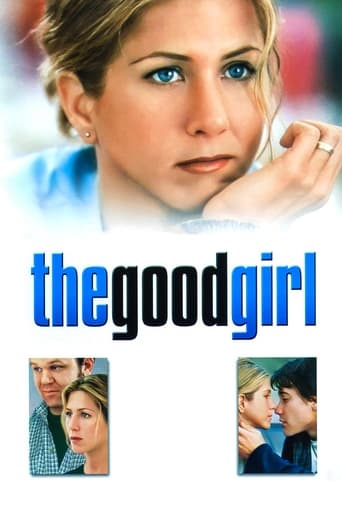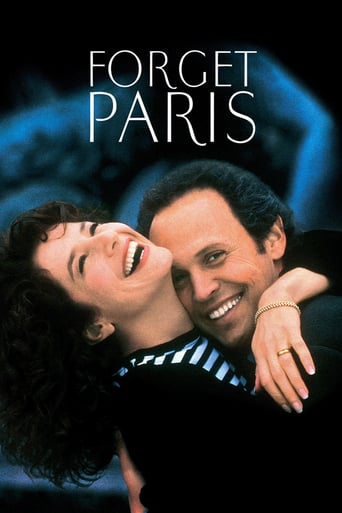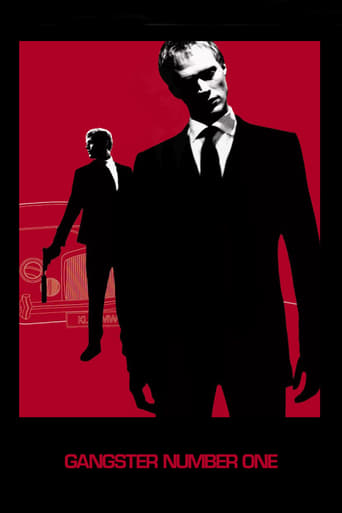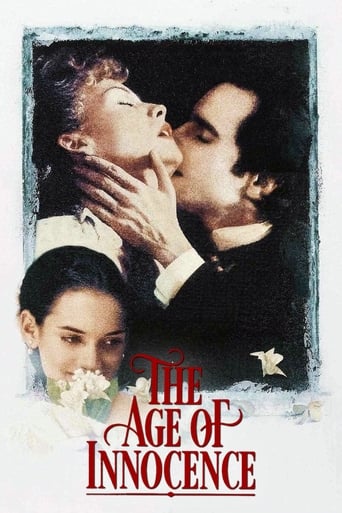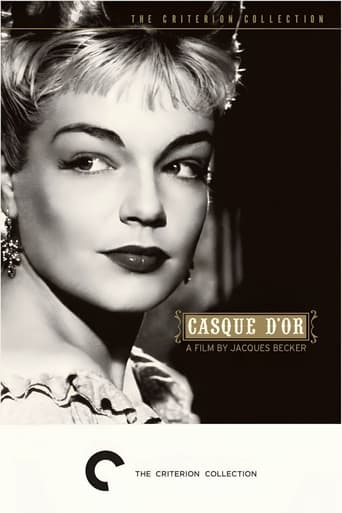
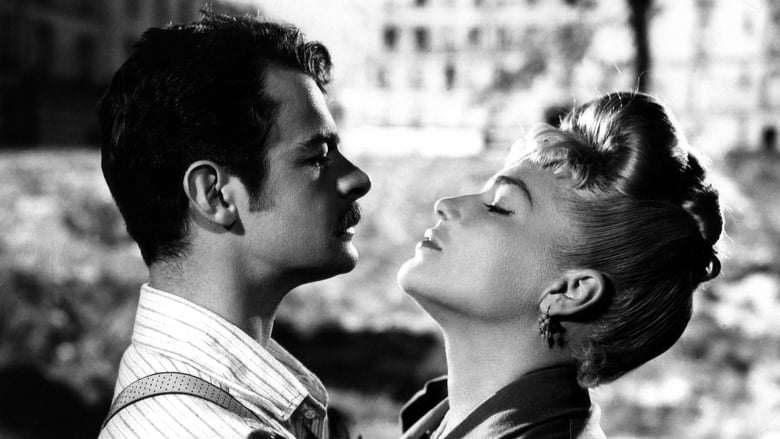
Casque d'Or (1952)
At the end of the 19th century, during a ball in Joinville, on the outskirts of Paris, Georges, a former delinquent working as a carpenter, meets Marie, a young woman connected to a criminal gang.
Watch Trailer
Cast


Similar titles
Reviews
This is one of the great classics of the French cinema from the immediate postwar period. The title, which means 'helmet of gold', presumably is a reference to the prominent bun in which Simone Signoret wears her golden hair, since it is she who precipitates all the dramatic and violent events in the story by driving men wild. The film is set circa 1900 in and near Paris, and the brilliant director Jacques Becker, who was a fanatic about period detail, has given us a vivid portrait of daily life in the suburbs of Paris, such as Belleville, at that era. I have rarely seen such perfection of costume, props, and sets for a period film. Sometimes it seems as if Becker must personally have supervised every stitch of thread in the clothing. The main characters are those low-life ruffians, or small-time gangsters, of Paris whom the French love to call by the name of 'apaches', a term derived from the Americans and their accounts of the supposedly wildest and most unruly of the American Indian tribes. The apaches (pronounced in the French style, 'layzuhpahsh') are a kind of national obsession to the French, perhaps even more so now that they are largely extinct, having been superseded by those far more extreme villains of our own time, international drug dealers and people traffickers, and terrorists. The apaches had their own peculiar codes of honour (such as shown in this story), whereas 'honour' means nothing to the more vicious criminals of today. The British used to be nearly as obsessed with their own native small-time gangsters, the London East End gangs, as the French have been with their Paris apaches. But just as nation states are being dissolved before our eyes, so too are the local criminal gangs of specific countries, and the quaint behaviour of such people seen in films like this is now an anachronism which is bound to be as remote to younger viewers as the thrashing tails of dinosaurs, and from an epoch perceived by them as being nearly as distant. It is an endlessly fascinating spectacle to watch this film, and savour the costumes, settings, and mannerisms of the time, which are so perfectly portrayed. The apache men, and indeed many ordinary workmen such as carpenters, all wear wide pale cummerbunds wrapped around their waists, beneath which rise the high narrow waists of their otherwise baggy and billowing corduroy trousers. They wear those pull-over shirts with buttons that only go half the way down, with broad and wide open collars and baggy sleeves gathered in at the shoulders. They are as careful of their appearance as they are of their reputations for villainy and violence. The head of a gang, Leca, played by Claude Dauphin, at one points tells one of his gang to stop wearing a flat cap, as it will give the gang a bad name with the neighbours! The film opens with a scene straight out of a Renoir painting, with three long rowing boats on the Seine upstream from Paris pulling in to the shore, the men wearing boaters, and their gaily laughing girlfriends all dressed to the nines for a Sunday out. They run giggling in to a quaint outdoors riverside 'bal', a restaurant with a small band where they can do what the apaches and their gals love best: dancing with passion and style. The dancing itself is a marvel to be seen. But then we come to realize that these are not ordinary young men and women, these are gangsters and their molls. And here, the mischievous flirtation of Signoret, the most glamorous of the molls, with a handsome young stranger, sets in motion the tragic events which then proceed to unfold with bloody inevitability. The young man she fancies is played with eloquent macho silence by Serge Reggiani. It turns out that he has previously spent five years in the same prison cell with a member of the gang, who is his best friend. This sets up various conflicts of loyalty and enhances the tensions. Signoret is an expert at portraying sensual intensity while holding her head high, what might be called 'the proud whore motif'. When appearing in a film, she can turn on the inner sexual incandescence with the ease with which someone of today can click a computer mouse. All that was required was for a director to say: 'Action!' (in French, of course), and the fire would flare up in her smouldering eyes and all actors in the film had better watch out. She never has pushed any buttons for me personally, as I have always found her too heavy, solid, and masculine, but then there are a lot of men out there who like that (as witness the strange preoccupation so many British males have with Judi Dench, and before her, with Glenda Jackson, and other such potential dominatrixes whose more feminine qualities always seem to be somewhat at the ebb tide, no matter how they may glower and try to convince us that they are female by the intensity of their expressions). I have always had the uncomfortable feeling that maybe Simone Signoret was really a man. I know that is ridiculous, and I confess to being in what must be an insignificant minority on the subject. But let no one imagine that she does not set the action on fire in this film, which she does aplenty. It is such a pity that only three films by Jacques Becker (1906-1960) appear ever to have had English subtitles added to them. He was a true master of the screen, even though the French have tried to keep him as their little secret. His son is Jean Becker (born 1933), another master of the screen who carried on the family's directorial tradition by making equally riveting and desperate films.
Casque d'or (1952) is a movie of infinite cinematographic science, skill, knowledge; not the average fine French '50s melodramabut an impressive work of art, a delectable achievement. It offers a lotas balance and charm. Its simplicity resides in the fullness of a great creation, of great poetry. Its value and poignancy lies, or resides rather in the execution, in the carefulness and skill of the montage, in the very advantageous craft.And this ,without being even for one moment decadent or ;the movie has the fullness of a true work of art. Notable are the balance, the tactfulness, the exquisite tone, the strength within the note of poetry. The core of poetry and creation is glowing in a story narrated with elegance and tact. Adequately filmed, it is also delightful on the other levelsas script, as acting .It is a very simple story of passion and betrayal and lust ,with common people and thugs as characters. I believe that the film was recognized from the beginning, in the '50s, as a The minimalistic style answers the needs of the taste; yet it's never ostentatious and unnatural, but necessary and adequate; adequacy, the formula for the successful approaches.It is as well made,less lyrical and far more coherent and striking than Port of Shadows .Its inherent limitations are obvious also,given with the subject and the approach,the orientation of the film.Yet on the other hand,this lightness beyond the words,the exquisite execution, the fluid style give Casque d'or (1952) the unmistakable charm and the complete propriety, adequacy of tone.It does not explore,like The Grand Illusion or Jeux Interdits,a wide spiritual universe,or highly differentiated inner realms;yet it treats with lightness and inspired tact a humble subject.This tact itself is marvelous,because it is the most adequate and useful.Henri-Georges Clouzot's Diabolique was a thing of a thrilling and frightful moral depth;Casque d'or (1952) finds and develops,in a manly and straightforward style,the immense poetry of an unpretentious ,even sordid subject.It does so with due limpidity and insight.Its virtues are as subtle as they are simultaneously obvious and unobtrusive.This mastery defines a style--an author's achievement.Its director was,like Charles M. Schulz and others in the popular culture, the expression and exponent of a civilization.As for the Mrs. Signoret, it is maybe enough to state here that I consider her to be the second best French movie artist. She was outstanding. In a certain sense, the fact that she obviously wasn't a beauty only made more evident her acting gifts.
This film doesn't work for me, which is weird considering that I'm familiar with both the director and the lead in "passionate" films, and yet this one didn't give what it pretty much advertised itself as being. Becker's "Touchez Pas au Grisbi" seemed to have a lot more personality and emotion, while Simone Signoret's part in "L'Armee des ombres" was a lot more love-able.The story is of a love-triangle (or square of sorts) within a small gang that gets set off by the introduction of reformed criminal Manda. Jealous boyfriend Raymond, boss Leca, and Manda find themselves all charged with getting the girl, but Manda's reformed nature makes him pure and true to his world, Raymond's jealousy makes him impotent, and Leca's hidden approaches creates the tragic ending.It's a good story, and in fact is well-shot and directed. The problem is that it all happens so quickly and needlessly. Marie and Manda fall into each-other's arms practically immediately, aspects like the fact that Manda is engaged gets mentioned and then forgotten as if unimportant, the character that introduces Manda to the gang disappears until he's needed for backstabbing Manda, and so on, everything just sort of tossed around until it's needed again (even some shots just fade-out in the middle of the action, once the story no longer cares for what's going to be said). The problem with a movie of this type being this way is that it hinges on romantic notions of love, which Serge Reggiana manages to present well enough with his acting, but which happens with none of the other characters. It's biggest flaw as far as I can tell is that I couldn't fall in love with Marie, who really didn't seem like that beautiful or interesting person at all--except that I was told to love her through the copious glowing "love shots" with the classic approach to soft lighting.What's fascinating to me is that Marcel Carne worked on this movie too, which seems that between he and Becker, you'd think that this would be one of the most romantic and passionate movies ever. None of it really presents itself, and it's Belle Epoque period stylization makes it look more goofy than, say, carnivalesque or romantic.--PolarisDiB
One more memory game: I'd been wanting to re-see this for years after a single Pacific Film Archive screening I'm not sure what decade. Memories of style as attack, attack by aura, dancers and fighters tracing curves across the screen. Manda's one-armed grab of Marie's waist the first time he dances with her. All the film's men swaggering, strutting, dancing with pointed nonchalance. Cummerbund things. Caps, derbies. Knives. Guns?! Yes, there are guns, but those I'd forgotten. The knife fight that my memory placed near the end, High Noon style, actually starts things moving. Maybe -- I'm only slightly ashamed to say it since I know hundreds of French films -- a little bit of Chuck Jones' or Pepe le peu's France had leeched into what I remembered. Or maybe it was Popeye introduced me to apache dancers.So now I own it. Most of the story returns as I watch.Just one small thing I want to say though, that anyone else might not, has to do with what photographers call highlights. Only two characters, Marie "Casque d'or" and her Manda, get eye sparkles. Especially when they're with each other or thinking of the other or her eyes are tearing, Becker and his photographer allow a bit of maxed out exposure, to us gleam, a twinkle, a tiny bit of white screen in a black pupil. Did they manually scrape the film to allow light to show through? Some when zoomed in upon look like little crosses, or multi-pointed stars with long axes. They're quite intricate. I've never developed film, but know from converting digital images in my editing software to black and white that this is both difficult to achieve naturally with a camera and difficult to create after the fact so as to look natural. But it's no lucky stroke that the two lovers' eyes gleam. Becker did it. The only other character allowed this sparkle is Leca, a single instance, I think right before he forces himself on Marie.Light laces the film's parts. The boats of the opening emerge from a silver white landscape as simply, deceptively simply, conceived as sumi-e. The girls and the gang soon turn the light into motion on the dance floor. The "swells" are light, as is any and every sheet Marie has lain upon. Does the guillotine blade sparkle? Probably not. I've forgotten again already.Touch points? Not for light, but for motion, dance, and both male and female confidence and swagger: Carlos Saura's Carmen and Blood Wedding.


